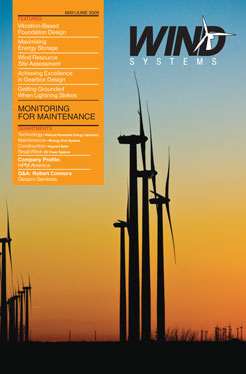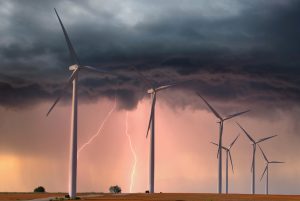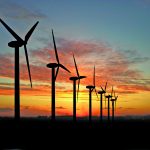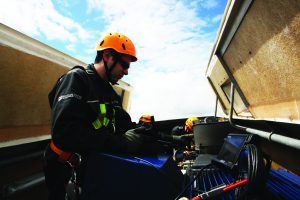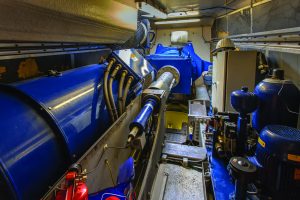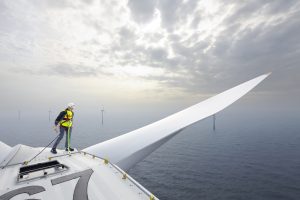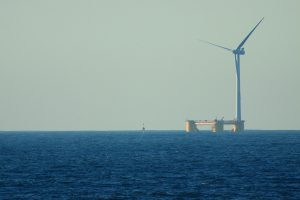Foundations have been a critical aspect of wind turbine tower design since the earliest days of the industry. Many early towers experienced foundation problems since the unique loading associated with these structures was not yet fully understood. As towers become taller, efficient foundation design is an increasingly significant component of the overall profitability of wind farm construction and operation.
Although wind turbine towers are not particularly heavy, by their very nature these tall, slender structures are subject to high lateral loading at a distance far above their base, resulting in a large overturning moment. In seismic areas, earthquake loading requires additional analysis, as the structural design of wind towers is quite sensitive to cyclic loading. Offshore wind turbine tower foundations pose additional foundation design and construction challenges, as wave and current loading, vessel impact, and scour must be addressed.
As with any foundation design, the first step is to perform a geotechnical exploration at the proposed site to identify the site characteristics and subsurface conditions. Field and laboratory tests should be performed to understand the subsurface conditions and the geotechnical parameters necessary for the design. Strength and deformation characteristics of the subsurface soil and rock govern the size and type of foundation system based on overall stability and tower deflection criteria. The overturning moment applied at the base of wind towers is a dynamic loading condition, varying with wind speed and direction. Therefore, geotechnical engineers must conduct appropriate laboratory and field testing that provides dynamic soil properties, in addition to static properties commonly provided for traditional structural design.
Both deep- and mat-foundation types have been used to support land-based wind towers. In the first category a single shaft is centered beneath the tower—this is often referred to as a “mono-pole” system—or a pile cap supported on a group of driven or drilled piles is used. The mat foundation is generally octagonal in shape, and it is sometimes referred to as an inverted “T” slab. The mat is often buried to provide resistance to overturning moments. In lieu of overburden surcharge, rock or soil anchors can be installed around the perimeter of the mat to resist uplift from overturning moments.
Ground improvement is the process of bolstering specific attributes of soil to increase its suitability for foundation support. On many construction projects the underlying soils pose various problems that can be addressed by ground improvement. Such improvements may focus on increasing the soil’s shear strength and density to address stability issues, reducing compressibility, or altering permeability for groundwater control/consolidation. Some ground improvement techniques rely on the introduction of energy, whether by force or vibratory probes, to alter the characteristics of soils, while others mix or permeate the soils with a cementitious binder. Specialized structural elements may be introduced into the foundation soils, bypassing the problem soils altogether. Several different ground improvement methods may be used on the same site to achieve the desired results.
As an alternative to traditional deep foundations, ground improvement techniques are available to stiffen and strengthen existing soils, which enables the use of a mat foundation. Ground improvement methods for new tower foundations include grouting, aggregate piers/stone columns, dynamic compaction, vibro-compaction, and soil mixing. Existing site conditions and performance requirements will govern the selection and performance verification testing of the ground improvement type.
Offshore towers have additional loading related to currents, waves, and ice and ship impacts. They have been supported on driven mono-poles, gravity foundations (mats), and structural tripods supported by driven piles. Deep-water concepts consist of floating or partially submersed structures that are stabilized by anchored cables. A grounded deep-water concept (patented) has been developed that is similar to a lattice tower.
Occasionally, existing tower foundations require remediation to correct excessive deflection. Remedial options include: grouting for settlement reduction or structural releveling, micropiles for releveling and increased capacity, and anchors to increase overturning capacity. These techniques can be performed through an existing foundation or, in the case of micropiles or anchors, can also be installed adjacent to the existing foundation and structurally connected post-construction.
Wind tower mat foundations and traditional deep foundations are relatively common and well understood. However, many owners, engineers, and contractors are less familiar with ground improvement of poor soils to support a mat foundation or remediation of existing foundations. In future issues this column will provide information and guidance toward possible applications of ground improvement technologies within the wind tower construction industry.
















